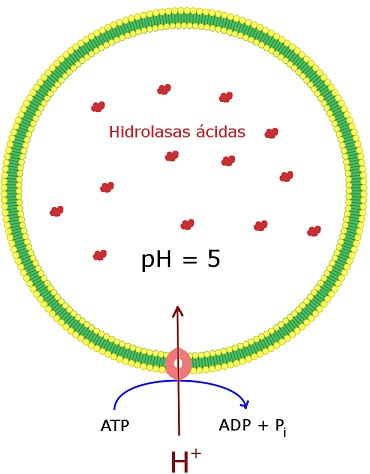A genetic lysosomal storage disease is Gaucher disease, produced by the mutation of the gene that encodes the enzyme responsible for the hydrolysis of glycolipids. The undigested material accumulates inside the lysosomes.
There are also other diseases related to lysosomes due to changes in their membranes that allow hydrolases to discharge into the hyaloplasm. For example, if the cells engulf substances capable of breaking the lysosome membrane, as happens in gout and silicosis.
The drop is a disease characterized by excessive production of uric acid, which causes the acid concentration in the plasma is so high that crystallizes in the synovial fluid of the joints. White blood cells engulf these crystals, but the formed vacuoles are broken and hydrolases are released that digest the white blood cell, reach the joints, and an inflammatory reaction, arthritis, occurs.
The silicosis is a typical disease caused by mining inhalation of silica particles. Silica reaches the lungs, where it is engulfed by cells whose vacuoles are destroyed. Muscle tissue defends itself by manufacturing collagen fibers, but this fibrosis prevents the transport of gases, thus rendering the lung tissue useless.
